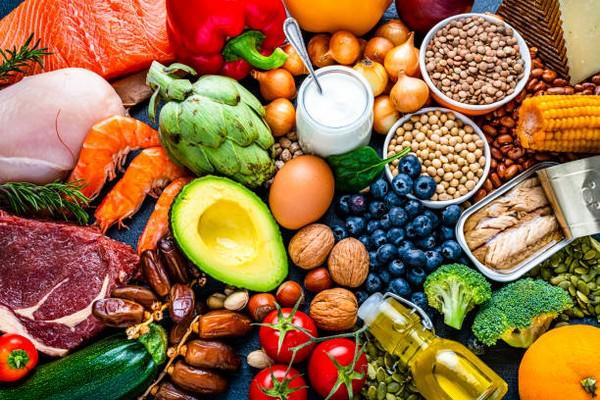For many mothers balancing careers and family life, maintaining a healthy diet and workout routine can feel like an uphill battle. Jessica, a 40-year-old mother of four, has long struggled with achieving her fitness goals—losing weight and building muscle—due to a hectic schedule and frequent snacking. But after submitting her eating habits to Business Insider’s Nutrition Clinic, where dietitians offer personalized advice, Jessica is receiving guidance on how to transform her diet for the better.
Eating Habits That Could Be Sabotaging Your Weight Loss Goals
Jessica’s daily routine is typical of many busy parents: she juggles a full-time remote job, school runs, and household responsibilities. Although she has access to a Peloton bike, she admits to lacking the motivation to work out consistently. Jessica’s ultimate goal is to lose 30 pounds and reach her wedding weight by her next anniversary—but afternoon cravings often derail her efforts.
Dietitian Alix Turoff notes that Jessica’s struggles are common among mothers, especially those working from home. A few key dietary adjustments could help Jessica get closer to her goals and better manage her hunger throughout the day.
Start Your Day with a Substantial Breakfast
Jessica’s morning routine consists of coffee with creamer and a protein shake made with water and powdered peanut butter. She typically skips lunch, feeling full after the shake. However, Turoff warns that this lack of substantial meals in the morning may contribute to overeating later in the day.
“Jessica is probably consuming no more than 200 calories by mid-morning,” Turoff explains. “This leaves her feeling deprived, which triggers the binge-eating habits she experiences later.”
To address this, Turoff recommends Jessica could make her shake more filling by adding frozen fruit or nut butter. Alternatively, pairing the shake with a slice of whole-grain toast could provide the necessary fuel to prevent cravings from taking over.
Balance Your Meals with Protein, Carbs, Fat, and Fiber
Jessica’s afternoon snacking is often a challenge. She finds herself reaching for chips, granola bars, and handfuls of chocolate chips when her kids come home from school. While Jessica favors whole foods, stress often drives her to binge on less healthy options.
To curb these cravings, Turoff suggests Jessica focus on balanced meals that include a mix of protein, carbohydrates, healthy fats, and fiber. At lunchtime, Jessica could try a salad with beans and lean protein such as chicken or tofu, or opt for a turkey sandwich on whole-grain bread.
“Balanced meals will help stabilize blood sugar levels, leading to sustained energy and fewer cravings for sugary or carb-heavy foods,” Turoff says.
Plan Snacks to Avoid Mindless Eating
While more substantial meals may reduce Jessica’s urge to snack, planning ahead can also help manage cravings. Turoff advises selecting three nutritious snacks to rotate throughout the week, so Jessica always knows her options without having to make multiple decisions.
Healthy snack options could include popcorn with string cheese, nuts paired with fruit, or a protein bar—all of which will provide lasting satiety and curb the desire to overeat.
Make Dinnertime More Balanced
Dinner in the household is usually a simple affair: lean meats with vegetables. However, Jessica often finds herself too full to enjoy her evening meal after snacking throughout the afternoon. To remedy this, Turoff suggests adding a carbohydrate source—such as baked sweet potatoes, rice, or pasta—at dinner to create a more balanced and satisfying meal.
As Jessica begins to control her snacking habits, she will likely find herself hungrier for dinner, making it easier to maintain healthy portions.
The Role of Calories in Weight Loss
For weight loss, the key is achieving a calorie deficit—consuming fewer calories than you burn. While Jessica doesn’t need to obsessively count every calorie, Turoff recommends estimating how many calories she should aim for by multiplying her target weight by 12. This will provide a ballpark figure for her daily caloric intake.
“From there, she can distribute those calories across breakfast, lunch, dinner, and snacks to meet her goals,” Turoff suggests.
Exercise Comes After Food
Although exercise is crucial for overall health, Turoff points out that it plays a smaller role in fat loss than many people realize. Jessica should prioritize making dietary changes before diving into a rigorous workout routine.
“Once Jessica begins to see weight loss from her dietary adjustments, it may provide the motivation she needs to exercise more regularly,” Turoff says. If Jessica’s Peloton workouts aren’t motivating her, Turoff recommends trying different forms of exercise, such as strength training, which can be particularly effective for building muscle. Strength training sessions two to three times a week will support Jessica’s muscle-building goals.
Final Thoughts
By focusing on more balanced meals and strategic snacks, Jessica can regain control of her eating habits and steadily work toward her weight loss and muscle-building goals. While consistency and planning are key, Turoff emphasizes that the process will ultimately require patience and a commitment to long-term lifestyle changes.
Related Topics:
What Foods Are Good for Belly Fat


